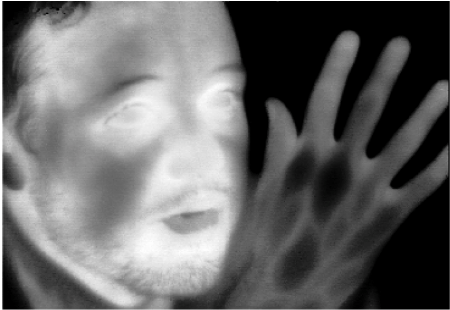A research team led by Yong-Hang Zhang from the Arizona State University is involved in the development of novel ways using nanoscale materials for optimizing infrared photodetector technology used in national security and defense systems.
 ASU engineers are working on technological advances that promise to help enhance infrared photodetection used in sophisticated weapons and surveillance system, industrial and home security systems, medical diagnostics and night vision equipment for law enforcement and driving safety. (Photo by: Orkun Cellek/ASU)
ASU engineers are working on technological advances that promise to help enhance infrared photodetection used in sophisticated weapons and surveillance system, industrial and home security systems, medical diagnostics and night vision equipment for law enforcement and driving safety. (Photo by: Orkun Cellek/ASU)
The research team used several ultrathin nanomaterial layers wherein crystals are produced in every layer. The combination of these layered structures form ‘superlattices.’ Zhang explained that the sensitivity and detection quality of a photodectector depend on the conversion efficiency attained by these crystals.
The detection wavelengths of the superlattices developed by the research team can be widely modified by altering the composition and design of the layered structures. Zhang informed that the infrared photodetector’s sensitivity can be improved by accurately arranging the nanoscale materials into superlattice structures.
The research team utilized a combination of indium arsenide antimonide and indium arsenide to form the superlattice structures. This combination enables devices to produce photo electrons required to offer infrared signal imaging and detection, explained Elizabeth Steenbergen, one of the researchers.
Zhang informed that this combination also decreases the loss of optically agitated electrons, thus improving the carrier lifetime of the electrons by over 10 folds than that can be attained by other conventional material combinations utilized in the technology. Carrier lifetime is an important aspect that has restricted the efficiency of a photodetector in the past. Infrared detectors made of this combination require less cooling, which in turn decreases the power required to operate the devices. Thus these devices are more cost effective and reliable and pave the way to improve systems such as advanced surveillance systems, guided weaponry, home and industrial security systems and utilize the infrared detection for road-safety devices and medical imaging.
According to the research team, the device design can be optimized by improving the layering designs of the complex superlattice structures.